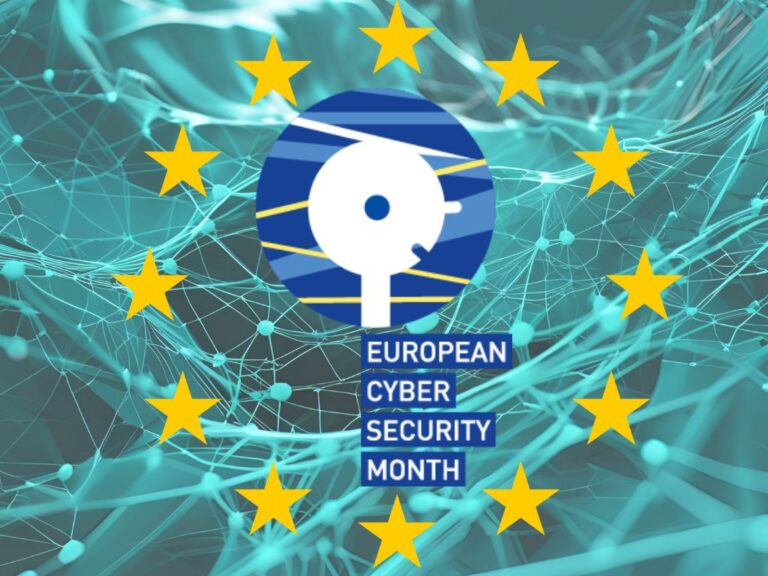Every year, October is dedicated to European Cybersecurity Month, a crucial event for digital protection. Coordinated by the European Union Agency for Cybersecurity (ENISA) and promoted in all EU Member States, this event aims to raise awareness among citizens, businesses, and institutions about the increasingly complex challenges of digital security. In a world where cyberattacks are on the rise, personal data has become a valuable commodity, and threats are becoming increasingly international, this dedicated month is not just a communication exercise: it is a strategic necessity.
In the first part of our article, we will look back at the origins of European Cybersecurity Month, its role, its main themes, and how it fits into a global context of exploding cyber threats.
Cybersecurity has never been more important than it is today. According to various recent studies, the global cost of cybercrime is estimated at several trillion euros each year, and continues to grow. Attacks are no longer limited to isolated viruses or traditional banking scams: they take the form of massive campaigns, sometimes led by organized crime groups or even supported by states.
Notable phenomena:
Faced with this reality, awareness campaigns must be designed as real tools for collective mobilization, with a dual ambition: to educate and empower.
European Cybersecurity Month was launched in 2012 by ENISA, in partnership with the European Commission. Its initial objective was relatively simple: to standardize and amplify awareness initiatives across Member States in an area where disparate approaches were causing problems.
From its very first edition, the event highlighted the need to create a common language around digital threats. While each country had its own campaigns, cyberspace itself has no borders. Cybercrime ignores administrative boundaries and exploits precisely these differences in protection.
By establishing a European Month, the institutions sought to:
Thirteen years later, European Cybersecurity Month has become a highly anticipated event, on par with other major awareness campaigns (such as those on road safety or public health).
Cybersecurity Month has three main objectives.
The first objective is to provide clear, up-to-date, and accessible information. In a field often perceived as technical, the challenge is to simplify without compromising accuracy. The aim is to make concepts such as “multi-factor authentication,” “denial-of-service attack,” “cryptojacking,” and “data exfiltration” understandable.
The second objective is to promote best practices: regularly updating software, rigorously managing passwords, using protection tools, and being vigilant about suspicious emails. These tips may seem basic, but failure to apply them is the cause of the vast majority of incidents.
The third, more recent objective is to encourage everyone to feel involved. Cybersecurity is not just a matter for IT departments or public authorities. Every citizen, every employee, and every student has a role to play in securing their own use of technology.
European Cybersecurity Month does not just spread generic messages. Each edition is organized around specific themes, which provide a common thread for communication activities and training courses.
These themes reflect developments in the threat landscape. Some editions have focused on personal data protection, others on security in remote working, and others on new regulatory requirements. This thematic approach allows attention to be focused on specific issues, without diluting the message in an overly long list of best practices.
In 2025, the theme is The theme of Cybersecurity Awareness Month 2025 is “Secure our world,” supported by the message “Stay safe online.” Together, these messages encourage individuals and organizations to adopt practical habits that strengthen digital security.

One of the strengths of this campaign is that it operates at different levels. At the European level, ENISA coordinates and provides resources, communication kits, guides, and studies. But the momentum of the Month also relies on the commitment of local actors:
This proliferation of initiatives ensures that the Month is not just an institutional slogan, but a real moment of mobilization.
However, some experts point out the limitations of the initiative. One month of awareness-raising, however rich it may be, cannot be enough to fill the massive gap in cybersecurity training. Many campaigns are limited to posters, social media posts, or educational videos, without bringing about lasting changes in behavior.
There is a risk that European Cybersecurity Month will become a formal ritual, a necessary step that reassures institutions but has limited real impact. To be effective, it must be accompanied by ongoing actions: regular training, practical exercises, support for businesses, and follow-up campaigns throughout the year.
Beyond raising awareness, European Cybersecurity Month is also part of a broader political project: strengthening Europe’s strategic autonomy in the face of digital threats. The world’s major players, the United States, China, and Russia, are investing heavily in offensive and defensive cyber capabilities. By stepping up cooperation and awareness initiatives, the European Union is seeking to catch up and assert its role in cyberspace governance.
In this sense, October is also symbolic: it represents a Europe that recognizes the reality of cyber threats and is attempting to unite its citizens around a common cause.
European Cybersecurity Month is an event not to be missed, but there is room for improvement. Join us in mid-October for the second part, which will focus on the practical challenges of implementation: how businesses and individuals can turn awareness messages into tangible and sustainable actions that go beyond a month of mobilization. In the meantime, if you have a movie, series, software, or e-book to protect, don’t hesitate to call on our services by contacting one of our account managers. PDN has been a pioneer in cybersecurity and anti-piracy for over ten years, and we are sure to have a solution to help you. Happy reading, and see you soon!
Share this article